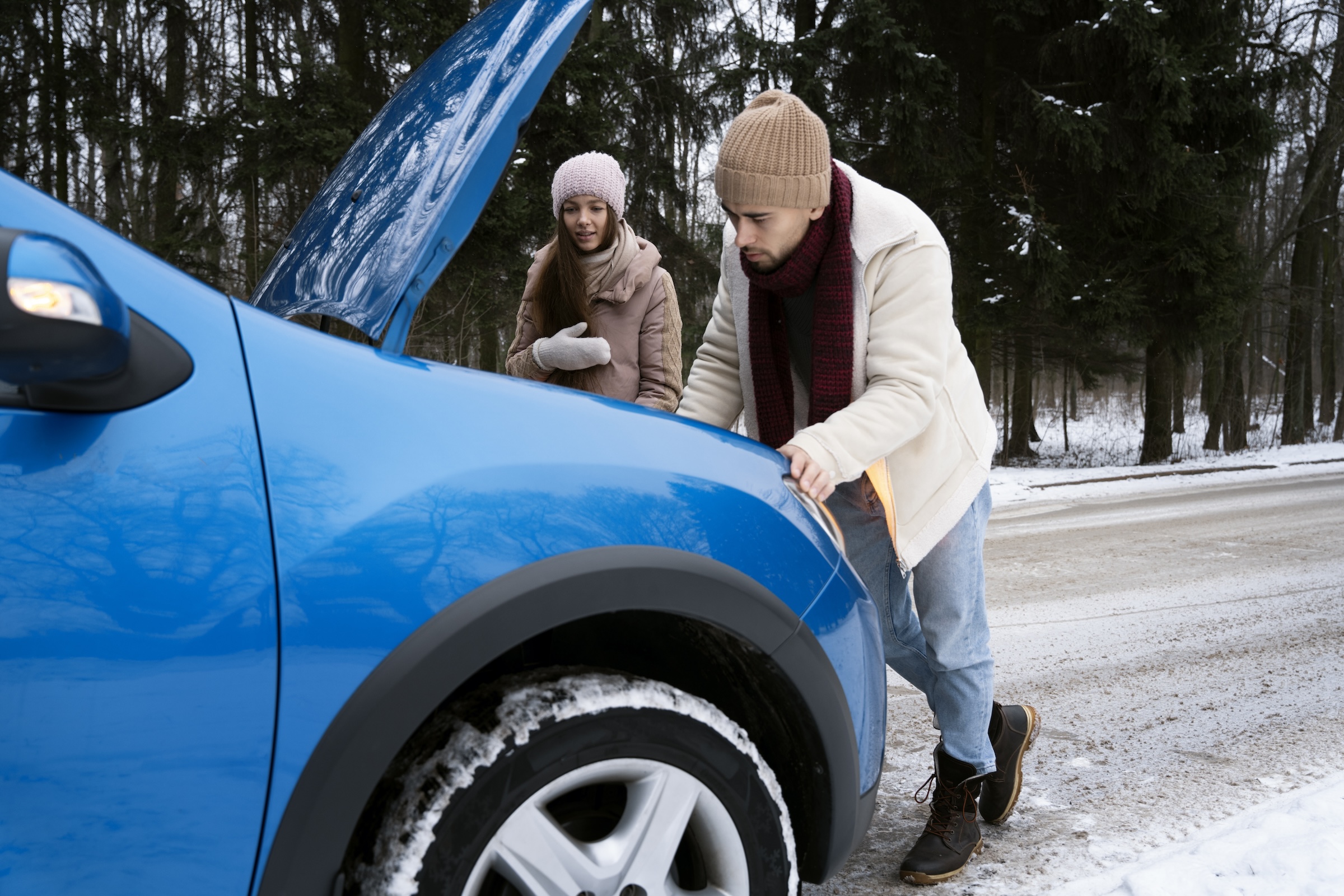The winter season is the most dangerous time to drive, even for experienced drivers. Snow makes the road slippery, which may cause your wheels to swerve, so you lose control of your vehicle. Given winter’s extreme weather conditions, who would want to get stuck with a broken car, feeling helpless while it’s freezing outside?
Tips on How to Prevent Your Car from Breaking Down During the Cold Season
Keep your car in its best shape so you don’t have to call for roadside assistance in winter. Here are ten simple tips that you can do in your garage to ensure your car is ready for the winter days:
1. Check your tire treads and replace bald tires.
The road is extra slippery during winter because the snow lessens the friction between the road and your car’s wheels. As part of your routine car check, also check your tires’ tread condition. Use a quarter to measure the treads; they should be at least 4/32 of an inch deep (approximately 0.16cm).
Tire problems are one of the most common reasons why people call for roadside assistance in winter, so it’s highly recommended that you check on them before the winter season comes.
2. Replace your car battery with a new one.
Dead batteries are also a common reason why drivers call for roadside assistance in winter. You don’t have to wait for your batteries to completely drain before replacing them. If your batteries are more than two years old, you should consider getting new ones.
3. Always pack an emergency kit, especially when traveling.
A car breakdown is one of the most stressful things that can happen to any driver, especially in the winter season. Always pack an emergency kit in case your car breaks down and you have to call for roadside assistance in winter.
4. Regularly check your antifreeze levels.
If you live somewhere that gets particularly cold and snowy during the winter, you will want to make sure that you check your antifreeze levels before hitting the road. Low antifreeze levels cause your car to overheat. So, if you don’t want to call for roadside assistance in winter, make sure you have enough antifreeze to last the whole trip.
5. Clean your headlights and taillights, and replace busted bulbs.
Drivers struggle with road visibility in the winter, especially in a snowstorm. To prepare your car for winter, check your car’s headlights and taillights and make sure they are clean. Replace busted bulbs; you need fully functional lights so you can see the road clearly in case you have to drive through a snowstorm.
6. Consider changing into snow tires for the winter season.
If it’s inevitable to drive every day throughout the whole winter season, consider changing regular tires for snow tires so you don’t end up calling roadside assistance in winter. Snow tires have treads designed to grip the slippery surfaces of winter roads more effectively than standard all-season or summer tires. They often have deeper treads and are made of softer rubber compounds that work even when temperatures drop below freezing.
7. Scrape off snow and clean your windows before driving.
Before you drive, scrape off the snow that accumulates in your windows and windshield. Snow and ice can obscure your visibility, and it’s especially dangerous if you’re driving in bad weather. To avoid calling for roadside assistance in winter, take this simple step before leaving your home.
8. Replace old wiper blades with new ones.
Replace your old wiper blades with brand-new ones a few weeks before winter. When driving in the winter, you’ll need excellent wipers to keep your windshield clean so you can see the road ahead. It’s an important precaution that may save you from calling roadside assistance in winter.
9. Always keep your gas tank at least half-full.
The last thing you want to do is call for roadside assistance in winter, in the middle of nowhere, and low on gas. Always keep your gas tank at least half-full. Keeping your tank full will ensure that the fuel line stays warm enough to work properly, even if it’s below zero outside.
10. Do not drive through piles of snow and large puddles.
Drive smart, especially in the winter. Avoid large piles of snow, even if you have snow tires installed, as this can cause your car to swerve and go out of control, which can be very dangerous. Stay on the road because it’s the safest place. If you see large puddles in the road ahead, slow down or completely avoid them to prevent potential damage to your car, so you don’t have to call for roadside assistance in winter.
Stay Safe and Prepared on the Road in Winter
Winter driving comes with unique challenges, but with proper preparation and regular vehicle maintenance, you can greatly reduce your chances of getting stranded or needing roadside assistance. Taking the time to inspect your tires, battery, fluids, and lights — and keeping an emergency kit in your car — can make all the difference when temperatures drop.
Remember, prevention is always better than repair. A few minutes of precaution before hitting the road can save you hours of frustration, costly repairs, and even potential accidents. Keep your car winter-ready, drive cautiously, and enjoy a safer, smoother ride all season long.
